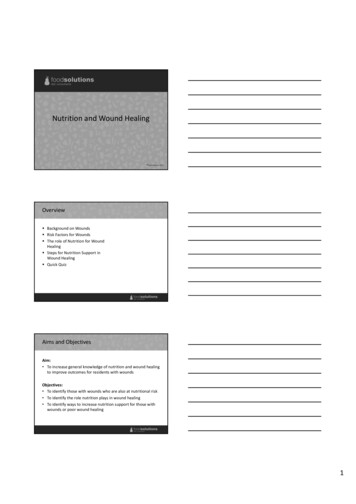
Transcription
Nutrition and Wound Healing Food Solutions 2017Overview§ Background on Wounds§ Risk Factors for Wounds§ The role of Nutrition for WoundHealing§ Steps for Nutrition Support inWound Healing§ Quick QuizAims and ObjectivesAim: To increase general knowledge of nutrition and wound healingto improve outcomes for residents with woundsObjectives: To identify those with wounds who are also at nutritional risk To identify the role nutrition plays in wound healing To identify ways to increase nutrition support for those withwounds or poor wound healing1
Background on Wounds54.8% of all wound types in elderly are skin tears 4% of 65yo have chronic leg ulcers (vs 1-2%)Pressure injury prevalence amongst Australians in agedcare 26%Nearly 25% in RACFs will have a wound of some type atone timeNegative Consequences of chronic woundsReduced mobilityDecreased QOLReduced independencePain and discomfortDepressionIncreased morbidity and mortalityIncreased health costsRisk Factors for Wounds Increased ageComorbidities (T2DM, RF, PVD)PolypharmacyPoor immune system Poor skin integrityIncontinenceMalnutritionDehydration2
Current guidelines for nutrition & wound healingRole of Nutrition in wound healingNutrient deficiencies impede wound healing extend inflammatory phase alter the synthesis of collagen decrease proliferation of fibroblastsRole of Nutrition in wound healingNutritional requirements higher for wound healing Need for increased cell proliferation, enzymeactivity and protein synthesis Requires energy from calories, plus increasedsubstrates sourced from protein andmicronutrients Glutamine (an amino acid) is the preferred energysource of fibroblasts & increases collagendeposition3
Nutrients required for Wound Healing Macronutrients– Energy (kJ/calories) from carbohydrates, fats & protein– Extra Protein including Arginine and Glutamine Micronutrients– Zinc, Copper, Vitamin A & CMore Energy Both malnutrition and pressure injuries can produce ahypermetabolic state à increase energy requirements Extra energy is required to produce collagen maintainnormal body functions If caloric needs are not met, dietary protein becomes an energysource instead of being used for wound healing Increasing caloric intake promotes anabolism, nitrogenand collagen synthesis Sources: Breads, Oils/Fats, Cereals, Tofu, Legumes, Beans,Nuts, Seeds, Meat and DairyEnergy4
More Protein Normal requirement: 0.8-1.0g/kg/day PI Stage 2 and above: 1.25-1.5g/kg/day Heavily exudating VLU, burns and severewounds: 1.5-2g*/kg/dayHigh protein foods: beef/chicken/fish, eggs,tofu, soy, milk, yoghurt, cheese, nuts,legumes* 2g/kg of protein can be dehydrating and is notrecommended for those with renal or hepaticimpairmentMore Protein Reduces muscle loss Protein building block of tissues Synthesizes enzymes involved in healing,cell multiplication & collagen synthesis Enhances blood supply to wounds, aidsre-vascularisation & lymphatic formation Arginine also promotes collagendeposition, improves immunity &increases tensile strength of woundProtein5
Supplement Use Use nutritional supplements if inadequate oral intake of meals(often contain protein mix of vitamins/minerals) Patients with PEM would not benefit from a supplement withonly Vitamin C Arginine due to needing all essential amino acidswithin a supplementSupplement Use Wound specific supplements can be used for chronic and slow toheal wounds (ie 4-6 weeks to heal), pressure ulcers, diabeticulcers, skin breakdown and burn injury For wound specific supplements – use for at least 2 weeks butshould see progress after 3 weeksMicronutrientsZinc: collagen production, immunity, and for catalytic activityof 100 enzymes for tissue regeneration. Sources: red meat,fish, dairy, wholegrain cereals, eggs Copper: adds strength to healing wound and scar duringgranulation. Sources: organ meats, seafood, wholegrains,nuts, legumes 6
MicronutrientsVit A: stimulates inflammatory response, epithelialisation andassists in collagen synthesis. Sources: egg yolk, dairy, fish,orange coloured fruit & vegetables Vit C: promotes collagen and new blood vessel synthesis,helps transition from inflammatory phase to proliferativephase of wound healing to reduce cell damage. Sources:citrus fruits, berries, tomato, capsicum, broccoliVitamins and MineralsFluid Dehydrated skin is less elastic, more fragile, susceptible tobreakdown Hydration improves circulation, important for blood andoxygen supply to the wound High temperature, vomiting, sweating, diarrhoea and heavilydraining wounds contribute to fluid loss which must bereplacedEncourage fluid intake via: water, milk, juice, yoghurt, custard,jelly, ice cream, icy-poles, soup, t/c.7
FluidNutritional Support: 4 main stepsStep 1: MNA/MST ScoreNutrition screening using the MalnutritionScreening Tool (MST) or Mini NutritionAssessment (MNA) in addition to usual woundassessmentMalnutrition Screening Tools (MST): Step 1 Identifies those at nutritional risk Asks 2 questions to captureunintentional weight loss anddecreased oral intake Adds up to MST score 0-1 Normal nutrition status 2 At risk of malnutrition8
Mini Nutritional Assessment (MNA): Step 1 6 sections- Oral intake, Weight loss,Mobility, Acute illness,Neurological, BMI/calfcircumference Adds up to a Screening Score- 0-7 Malnourished- 8-11 At risk of Malnutrition- 12-14 Normal nutritionalStatusNutritional support: 4 main stepsStep 2: Improve & Monitor Nutritional IntakeIf the MST Score is 2 and/or MNA Score 0-11à cease any dietary restrictions, commenceHEHP diet with fortified foods/drinks, HEHPmid meal items and HEHP milkshakes BDà monitor oral intake via a 3 day food and fluidrecordà if suspected chewing/swallowing issuesconsider referring for further assessment ifneededNutritional support: 4 main stepsStep 3: Intensive Dietetic InterventionIf no improvement after 2-3 weeks of HEHP diet refer to dietitianfor a comprehensive nutritional assessmentà Dietitians further individualise a HEHP diet, educate residentson nutrition and wound healing, consider compliance issues &oral nutritional supplements including arginine to meetrequirements 30-35ckal, 1.25-1.5g protein, & 30-35ml fluid/kgà Continue dietetic intervention for 2-3 more weeks or untilwound healing9
Nutritional support: 4 main stepsStep 4: Further InvestigationIf the wound still persists, recommend investigation intonutritional deficiencies including iron, copper, zinc*withpossible commencement of multivitamin*Note high dosages of zinc beyond 40mg will interfere withcopper absorption, only supplement individuals if deficientNutrition and Wound Healing Quick Reference ToolStep 1: MST/MNA ScoreStep 2: Improve &Monitor Oral IntakeMST 0-1 OR MNA 12-14(Normal Nutritional Status)monitor progress ofwound healing over2 weekswoundhealedORif noimprovementin 2 weeks&/or wt loss 2kg 1/12MST 2 OR MNA 0-11(At risk of malnutrition)monitor & improve oral intake by:ceasing dietary restrictions, commencing HEHP/fortified diet, HEHP milkshakes BD &encouraging fluidsrecording 3 day food & fluid chartmonitoring swallow/chewing issues, refer for Axif neededwoundhealedif delayed healing after 2-3 weeks, referto dietitianStep 3: Intensive DieteticInterventionStep 4: Further Investigationdietitian comprehensive Ax,EER EPR to 30-35kcal (125-145kJ/kg), 1.25-1.5g protein& EFR 30-35ml/kg, may include supplements & argininewoundhealedif wound persists after 2-3 weeks of intervention, refer forinvestigation into nutritional deficiencies & consider vitamin/mineralsupplementation if deficient (Zinc, Copper)References1.Sussman G. Wound Healing and cost impacts of interventions by pharmacists in community settings.Victorian College of Pharmacy Monash University. Forthcoming. 2003.Addade LPF et al. 2011 Venous ulcer: clinical characteristics and risk factors. Int J Dermatol 50:405-11.Banks M et al. 2010 Malnutrition and pressure ulcer risk in adults in Australian health care facilities.Nutrition 26: 896-901.4. National Pressure Ulcer Advisory Panel, European Pressure Ulcer Advisory Panel and Pan Pacific PressureInjury Alliance. Prevention and Treatment of Pressure Ulcers: Quick Reference Guide. Emily Haesler (Ed.).Cambridge Media: Perth, Australia; 2014.5. Sussman G & Golding M. Skin tears: should the emphasis be only their management? Wound Practice andResearch 19 (2) 2011.6. Best Practice Statement. Care of the Older Person’s Skin. London: Wounds UK, 2012 (2nd Ed).7. Dorner B et al. 2009. The Role of Nutrition in Pressure Ulcer Prevention and Treatment: National PressureUlcer Advisory Panel White Paper.8. Trans Tasman Dietetic Wound Care Group. Evidence based practice guidelines for the dieteticmanagement of adults with pressure injuries. Dietitians NZ and Dietitians Association of Australia; 2011 .9. Australian Wound Management Association Inc and New Zealand Wound Care Society. Australian and NewZealand Clinical Practice Guideline for Prevention and Management of Venous Leg Ulcers. CambridgePublishing; 2011.10. LeBlanc K & Baranoski S. Skin tears: Best practices for care and prevention. Nursing 44 (5) 2014.11. Sherman A & Barkley M. Nutrition and Wound Healing. J of Wound Care 20 (8) 2011.2.3.10
Healing § Steps for Nutrition Support in Wound Healing § Quick Quiz Aims and Objectives Aim: To increase general knowledge of nutrition and wound healing to improve outcomes for residents with wounds Objectives: To identify those with wounds who are also at nutritional risk To identify t
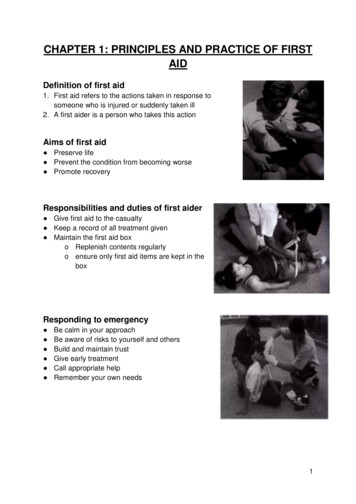


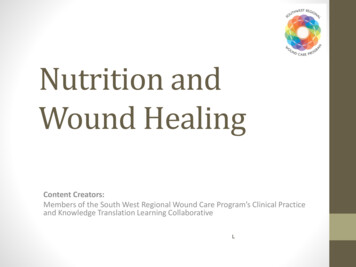
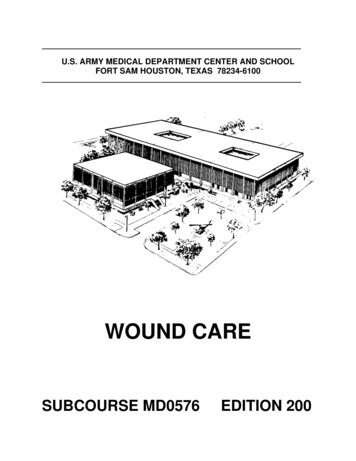
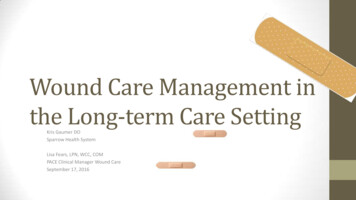
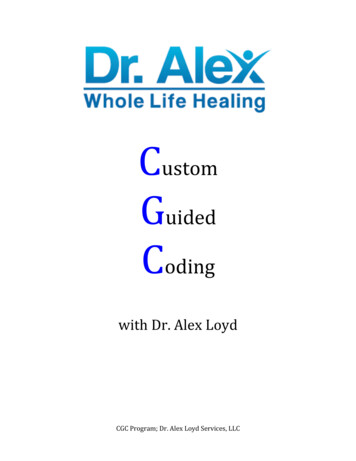

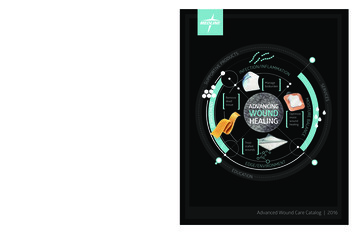
![WOUND HEALING lecture.ppt [Read-Only]](/img/18/wound-healing.jpg)
